Orinese Phi: Difference between revisions
mNo edit summary |
mNo edit summary |
||
| Line 34: | Line 34: | ||
The '''Orinese Phi''', ([[Oharic]]: ''Fī Erwaniyesi'', symbol: '''Φ'''; {{wp|ISO 4217|ISO code}}: '''ORP'''; also abbreviated as '''OP''') is the official currency of [[Orioni]] as well as accepted tender in several countries on [[Eurth]]. The [[National Bank of Orioni]] is responsible for issuing notes and coins in the nation's currency. The currency was adopted in 1893 and is subdivided into 100 Phili. One Phi is subdivided into 100 Phili (symbol: 𝞅). Altogether, there are eleven denominations of the Phi, with the smallest being the 1 Phili coin, which is valued at one hundredth of a Phi. Other coins include the 5, 10 and 50 Phili and the 1 and 6 Phi coins. The Orinese Phi is the world's fifth-largest reserve currency on [[Eurth]] in February 2021. | The '''Orinese Phi''', ([[Oharic]]: ''Fī Erwaniyesi'', symbol: '''Φ'''; {{wp|ISO 4217|ISO code}}: '''ORP'''; also abbreviated as '''OP''') is the official currency of [[Orioni]] as well as accepted tender in several countries on [[Eurth]]. The [[National Bank of Orioni]] is responsible for issuing notes and coins in the nation's currency. The currency was adopted in 1893 and is subdivided into 100 Phili. One Phi is subdivided into 100 Phili (symbol: 𝞅). Altogether, there are eleven denominations of the Phi, with the smallest being the 1 Phili coin, which is valued at one hundredth of a Phi. Other coins include the 5, 10 and 50 Phili and the 1 and 6 Phi coins. The Orinese Phi is the world's fifth-largest reserve currency on [[Eurth]] in February 2021. | ||
== History == | |||
The {{PAGENAME}} currency has only existed in its current form since 1893. | |||
The Orinese first entered the monetary system later than their counterparts in the [[Aroman Empire]], only producing their own round currency in the late 2nd century BCE. A currency was still a novel idea at the time. Like other civilizations, the Orinese used their coins as both a way to trade precious metals, and as a way to set a value to goods. [[Meda]]nese perfumes have been discovered as far away as Aroma, suggesting that the famous [[Pearl Road]] was already emerging. | |||
[[File:SARMATIA, Olbia. Circa 5th-4th Century BC.jpg|200px|thumb|left|Distinctive Orinese “Dolphin” coin, {{circa}} 1st century CE.]] | |||
While the early Orinese didn't mint their own coinage, there did exist a system of currency. From the 5th century BCE onward, they produced distinctive cast bronze money, uniquely shaped in the form of leaping dolphins. It is interesting that the early Orinese adopted an {{wp|ingot}} casting method in the dolphin shape, rather than the traditional round or square coinage of their contemporaries. This shape may have carried religious significance, and is said to have originated from sacrificial tokens used in the Temple of [[Zuidhaven|Hierapolis]]. These rather large chunks of bronze proved incredibly impractical for long-term use. However, they continued to be produced up until 218 BCE. | |||
(WIP. First currencies. Pre-decimal. Evolution. Establishment of modern currency. Use in the Empire.) | |||
== Administration == | == Administration == | ||
| Line 133: | Line 145: | ||
| Grey | | Grey | ||
|} | |} | ||
{{orioni}} | {{orioni}} | ||
{{eurth}} | {{eurth}} | ||
[[Category:Circulating currencies]] | [[Category:Circulating currencies]] | ||
Revision as of 12:59, 7 October 2022
| Fī Erwaniyesi (Oharic) | |
|---|---|
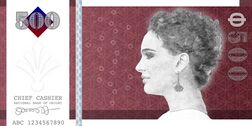 500 Phi banknote of the 2018 series | |
| ISO 4217 | |
| Unit | |
| Plural | The language(s) of this currency do(es) not have a morphological plural distinction. |
| Symbol | Φ |
| Denominations | |
| Subunit | |
| 1/100 | Phili |
| Symbol | |
| Phili | 𝞅 |
| Banknotes | |
| Freq. used | Φ10, Φ50, Φ100, Φ500 |
| Rarely used | Φ1000 |
| Coins | |
| Freq. used | 𝞅5, 𝞅10, 𝞅50 Φ1, Φ5 |
| Rarely used | 𝞅1 |
| Demographics | |
| Date of introduction | 1893 |
| Official user(s) | |
| Unofficial user(s) | |
| Issuance | |
| Central bank | National Bank of Orioni |
| Website | www.bank.gov.io |
| Printer | Royal Orinese Banknote Printing Corporation |
| Mint | Royal Orinese Mint |
| Valuation | |
| Inflation | 1.2% (December 2020) |
| Source | National Bank of Orioni |
| Method | CPI |
The Orinese Phi, (Oharic: Fī Erwaniyesi, symbol: Φ; ISO code: ORP; also abbreviated as OP) is the official currency of Orioni as well as accepted tender in several countries on Eurth. The National Bank of Orioni is responsible for issuing notes and coins in the nation's currency. The currency was adopted in 1893 and is subdivided into 100 Phili. One Phi is subdivided into 100 Phili (symbol: 𝞅). Altogether, there are eleven denominations of the Phi, with the smallest being the 1 Phili coin, which is valued at one hundredth of a Phi. Other coins include the 5, 10 and 50 Phili and the 1 and 6 Phi coins. The Orinese Phi is the world's fifth-largest reserve currency on Eurth in February 2021.
History
The Orinese Phi currency has only existed in its current form since 1893.
The Orinese first entered the monetary system later than their counterparts in the Aroman Empire, only producing their own round currency in the late 2nd century BCE. A currency was still a novel idea at the time. Like other civilizations, the Orinese used their coins as both a way to trade precious metals, and as a way to set a value to goods. Medanese perfumes have been discovered as far away as Aroma, suggesting that the famous Pearl Road was already emerging.
While the early Orinese didn't mint their own coinage, there did exist a system of currency. From the 5th century BCE onward, they produced distinctive cast bronze money, uniquely shaped in the form of leaping dolphins. It is interesting that the early Orinese adopted an ingot casting method in the dolphin shape, rather than the traditional round or square coinage of their contemporaries. This shape may have carried religious significance, and is said to have originated from sacrificial tokens used in the Temple of Hierapolis. These rather large chunks of bronze proved incredibly impractical for long-term use. However, they continued to be produced up until 218 BCE.
(WIP. First currencies. Pre-decimal. Evolution. Establishment of modern currency. Use in the Empire.)
Administration
The National Bank of Orioni dictates and oversees all monetary policy for the currency. The Royal Orinese Mint manages the minting of all coins. The Royal Orinese Banknote Printing Corporation manages the printing of all banknotes. This currency is the only acceptable legal tender for transactions within the country.
Characteristics
One Phi is subdivided into 100 Phili. Unlike other countries there are no denominations of 2, 20, 200, etc. The 1-Phili coin is rarely used due to its low value, and some stores may no longer accept it. The Φ1000 bill is rarely used because it is often associated with crime and money laundering. Criminals who make a lot of money, especially drug dealers, prefer the large denomination: it is easier to transport Φ1000 notes compared to for example Φ50 or Φ100 notes.
Coins
The Royal Orinese Mint manages the minting of all coins. In 2018, the following coins were introduced in connection with a redesign.
| Image | Value | ∅ | Description | |
|---|---|---|---|---|
| Obverse | Reverse | |||
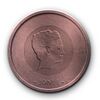 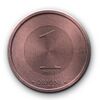
|
𝞅1 | 20 mm | Profile of Empress Joni I | Denomination and year |
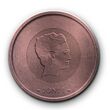 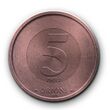
|
𝞅5 | 22 mm | Profile of Empress Joni I | Denomination and year |
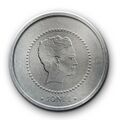 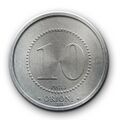
|
𝞅10 | 24 mm | Profile of Empress Joni I | Denomination and year |
 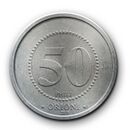
|
𝞅50 | 26 mm | Profile of Empress Joni I | Denomination and year |
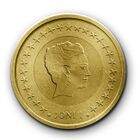 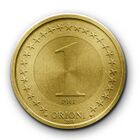
|
Φ1 | 28 mm | Profile of Empress Joni I | Denomination and year |
 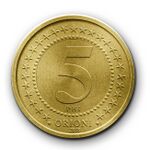
|
Φ5 | 28 mm | Profile of Empress Joni I | Denomination and year |
Banknotes
The Royal Orinese Banknote Printing Corporation manages the printing of all banknotes. In 2018, the following banknotes were introduced in connection with a redesign.
| Image | Value | Year | Dimensions (millimetres) |
Main colour | ||
|---|---|---|---|---|---|---|
| Obverse | Reverse | |||||

|
File:ORP 10 reverse (2018 issue).jpg | Φ10 | 2018 | 120 × 60 mm | Green | |

|
File:ORP 50 reverse (2018 issue).jpg | Φ50 | 2018 | 130 × 65 mm | Orange | |

|
File:ORP 100 reverse (2018 issue).jpg | Φ100 | 2018 | 140 × 70 mm | Blue | |

|
File:ORP 500 reverse (2018 issue).jpg | Φ500 | 2018 | 150 × 75 mm | Red | |

|
File:ORP 500 reverse (2018 issue).jpg | Φ1000 | 2018 | 160 × 80 mm | Grey | |
